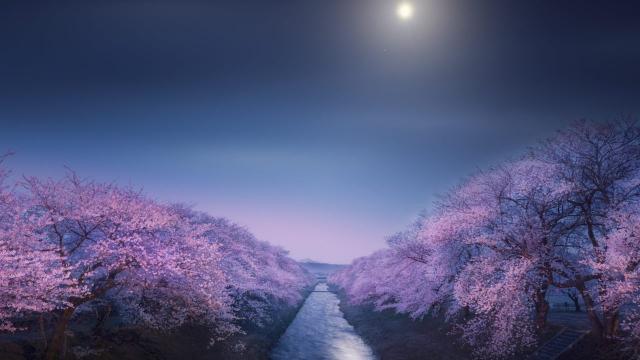Humans have long mapped the stars, and ancient civilizations built entire mythologies (and even their own architecture!) based on astronomy. But the advent of advanced photographic techniques have allowed us to capture the sky and beyond in sharper relief than our predecessors could have ever imagined. Some fine examples make up the shortlist for the Royal Observatory Greenwich’s 14th annual Astronomy Photographer of the Year competition. They showcase the majesty of the cosmos and the diversity of objects that constitute it.
“Spectrum”
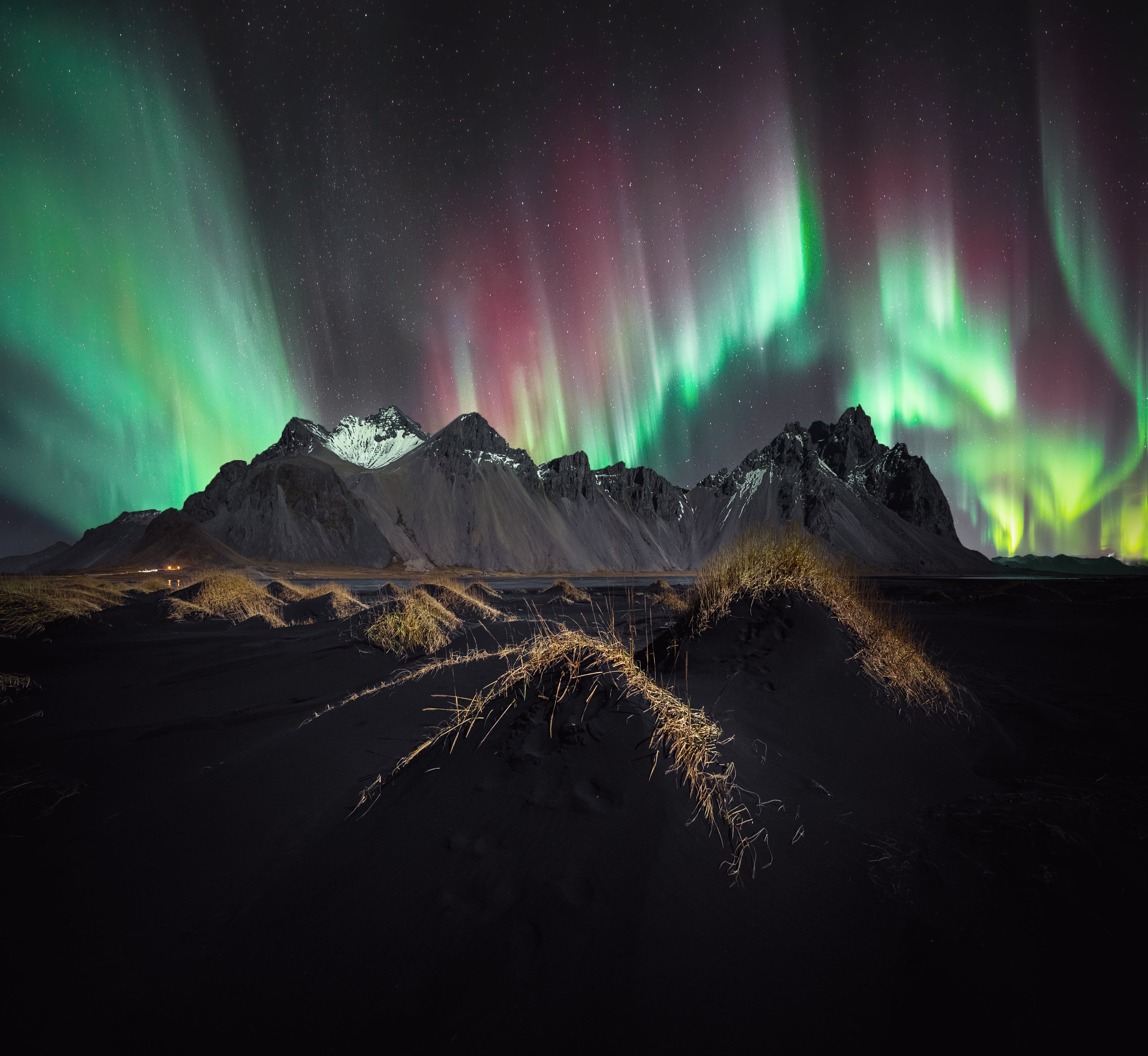
The Northern Lights shimmer above the Icelandic mountain Vestrahorn. The image is actually panorama of three photos.
“Solar Wind Power”
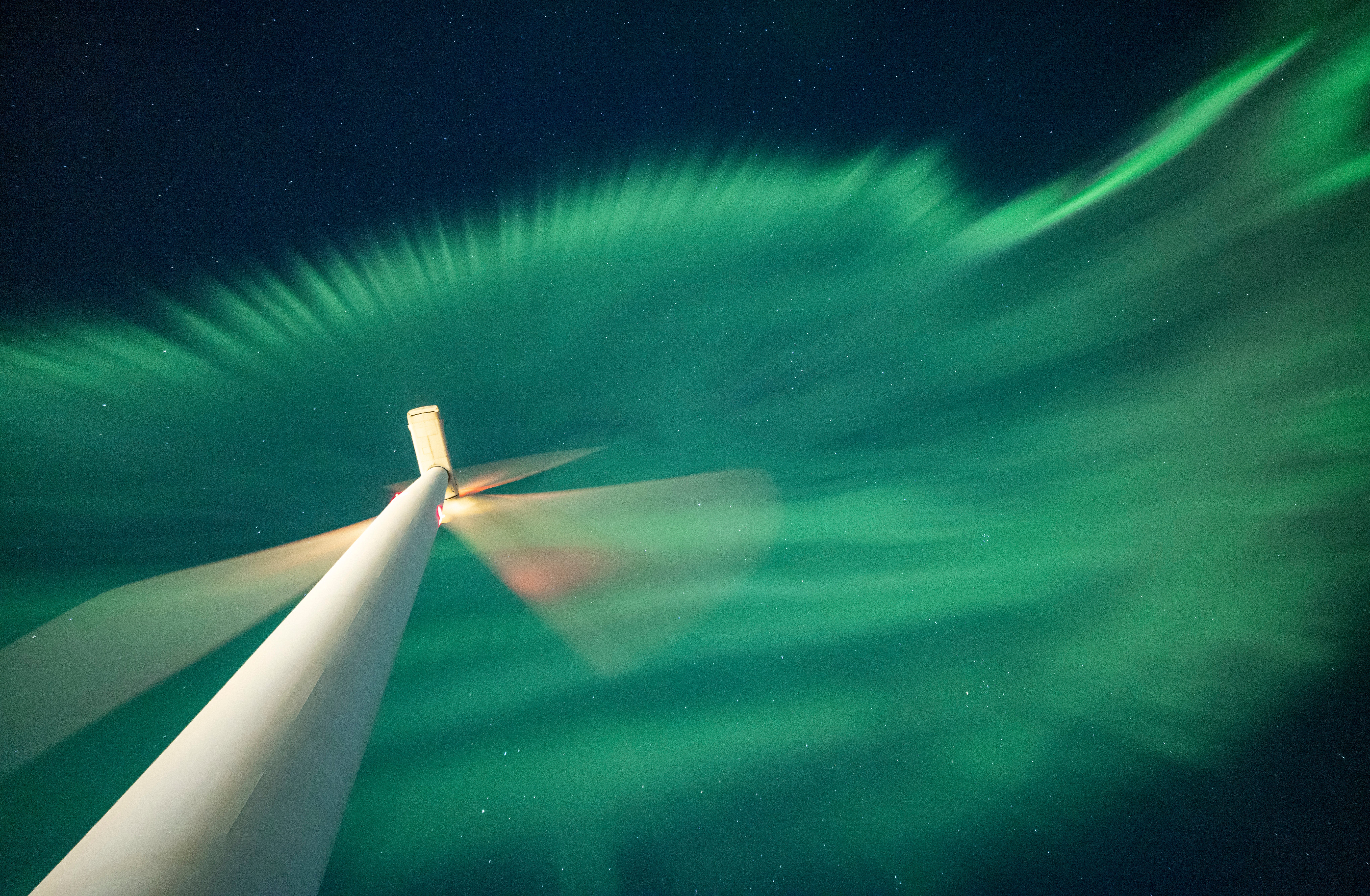
A wind turbine in North Ostrobothnia, Finland whirls below the aurora, creating the illusion that the two are somehow connected.
“An Icelandic Saga”
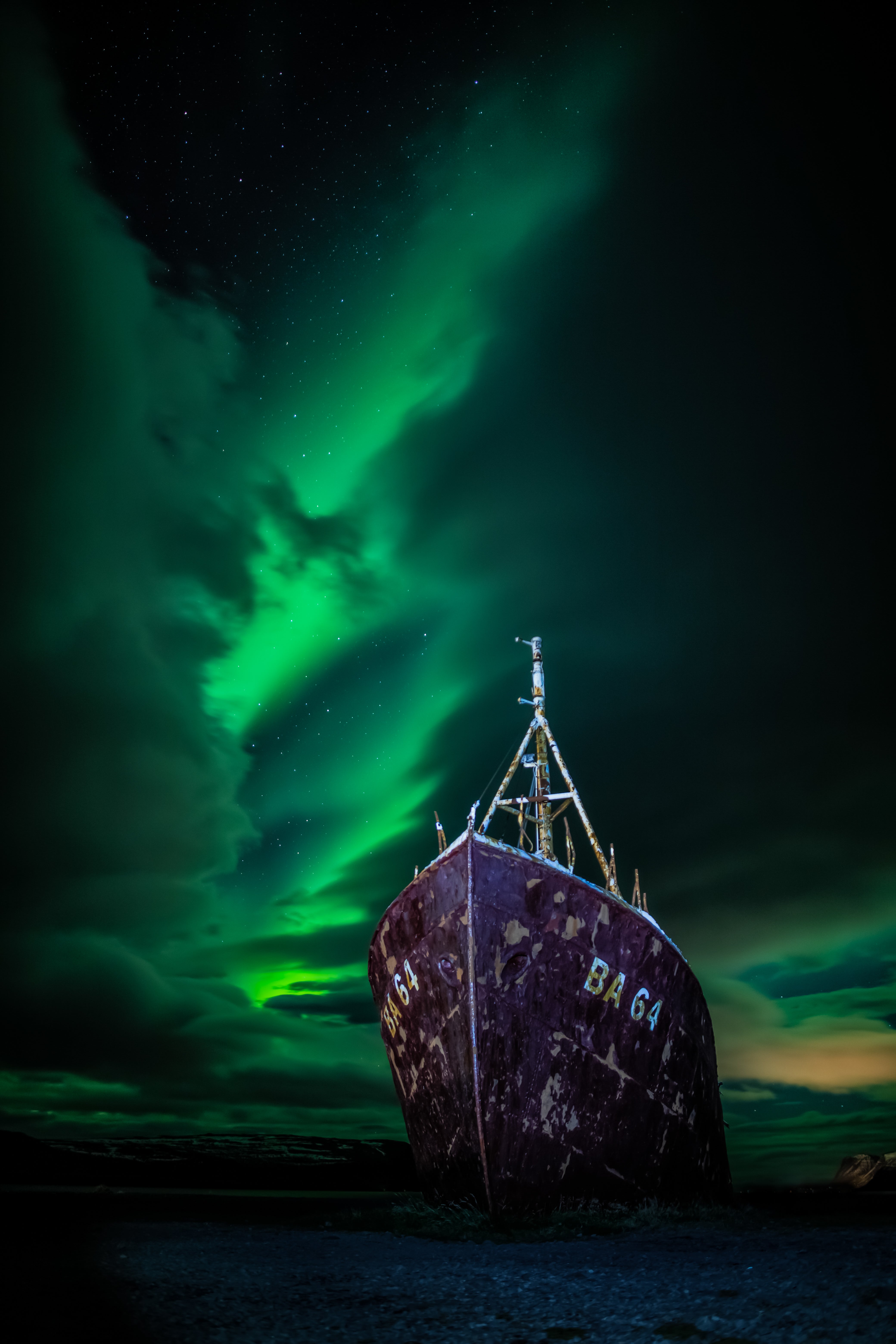
The aurora borealis dances above the wreck of a ship named Gardur, in the Westfjords of Iceland.
“Electric Wizardry”

More aurorae! Here, in Alberta, Canada, the Northern Lights are an ectoplasmic blur above the sharp horizon line of trees. A lake on the bottom half the photograph mirrors the eerie light.
“Messier 78″

Messier 78 is a reflection nebula, meaning its dust is being illuminated by a nearby star. The wispy grey-blue cloud is surrounded by stars in this view from Blanco, Texas.
“Radio Telescope”

The silhouette of the Mingantu Astronomical Observatory is visible here in front of the starry sky. The observatory is mostly used to look at the Sun.
“Arp 271: Cosmic Collision”
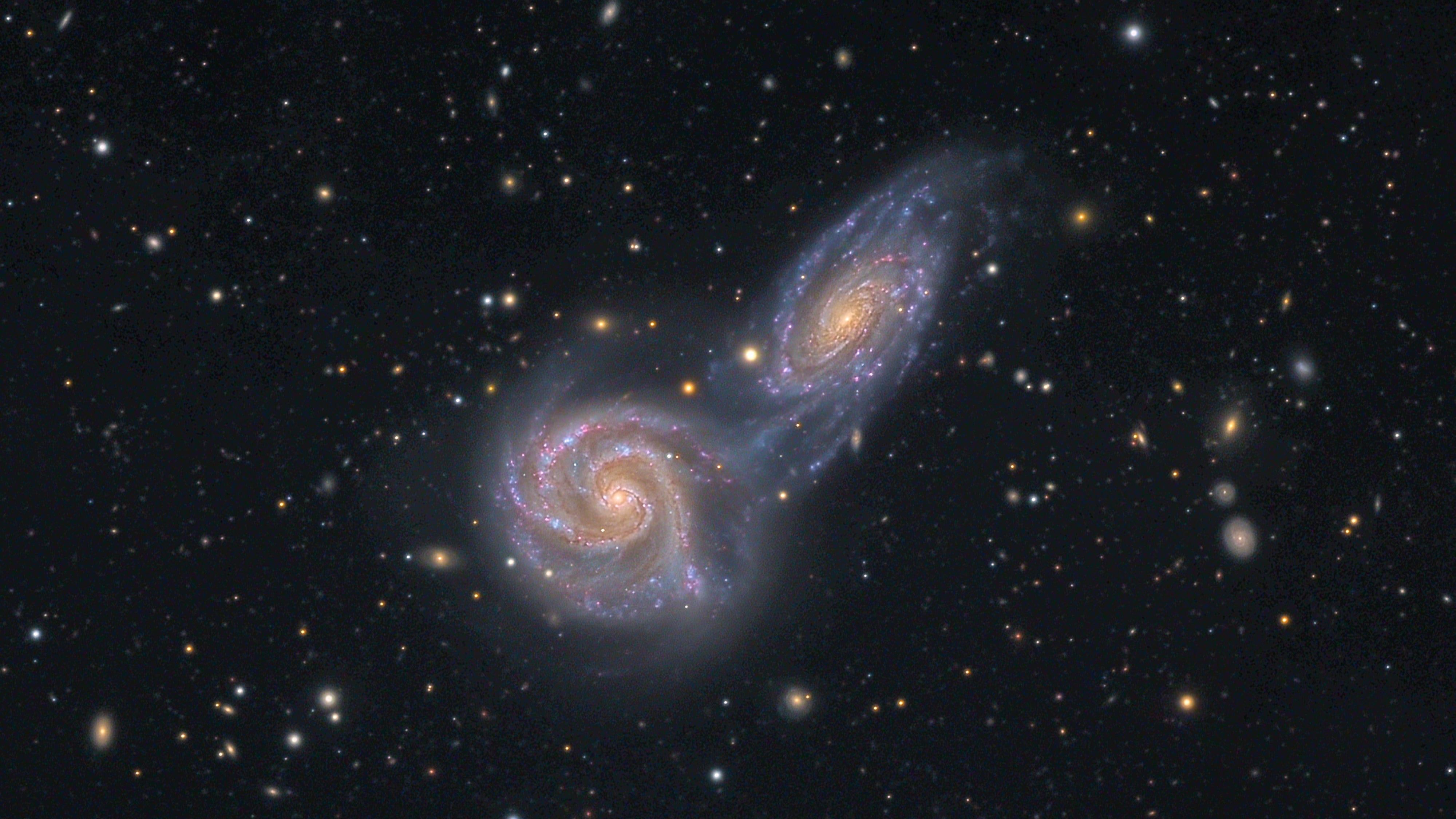
Two spiral galaxies are smooshing into each other in this image taken by the El Sauce Observatory in Chile. The galaxies will likely continue this interaction for tens of millions of years.
“Hydra’s Pinwheel”
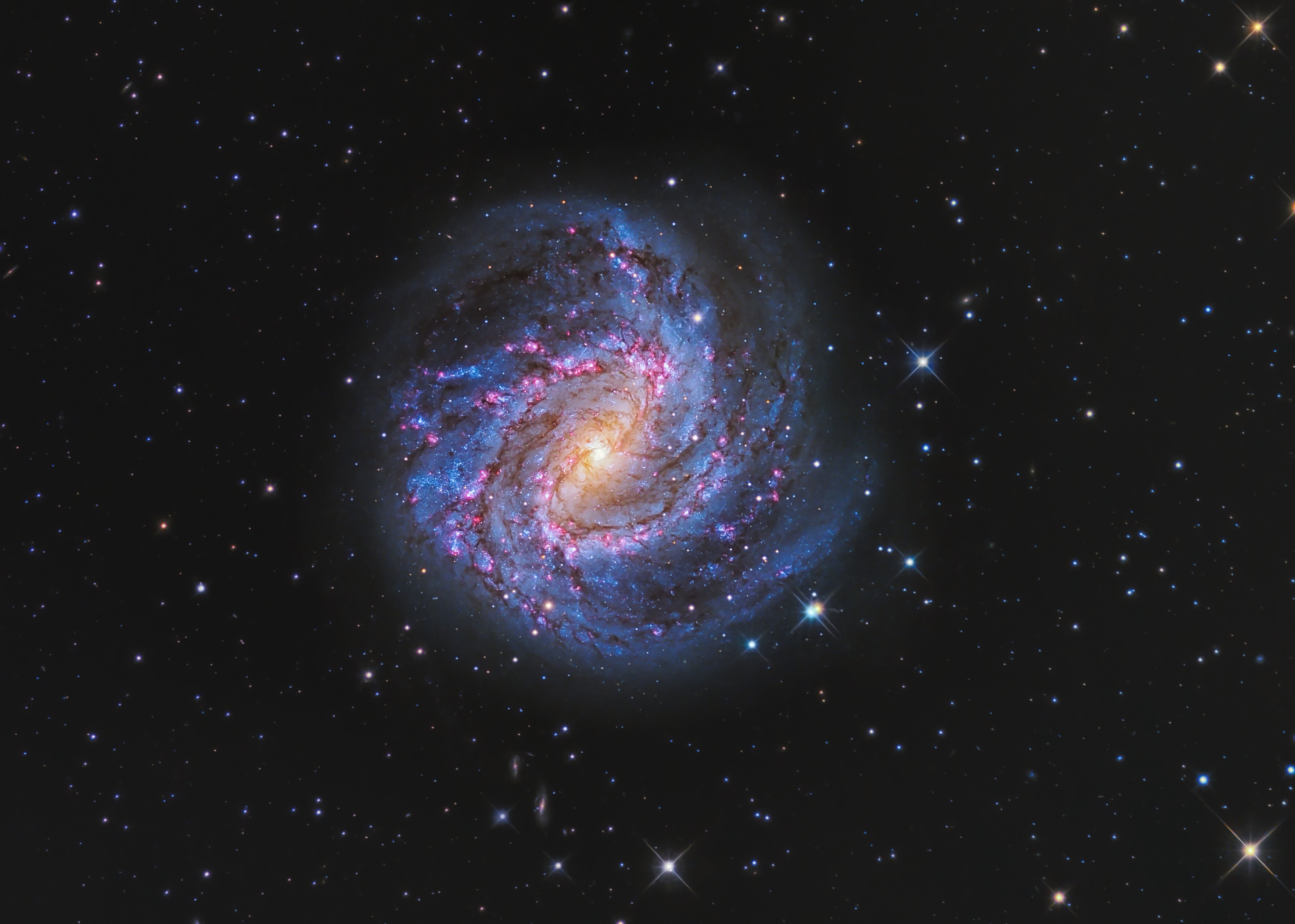
Here, the Southern Pinwheel Galaxy is seen on the 270th anniversary of its discovery. The image (taken in Australia) combines photographic exposures with colour data to emphasise the galaxy’s remarkable pinks and blues.
“Busy Star”

Data from the Solar Ultraviolet Imager here reveals the amount of activity on the solar surface. A coronal mass ejection in the upper left hand corner of the image shows one such energetic outburst by our local star.
“Earth Cyanotype”
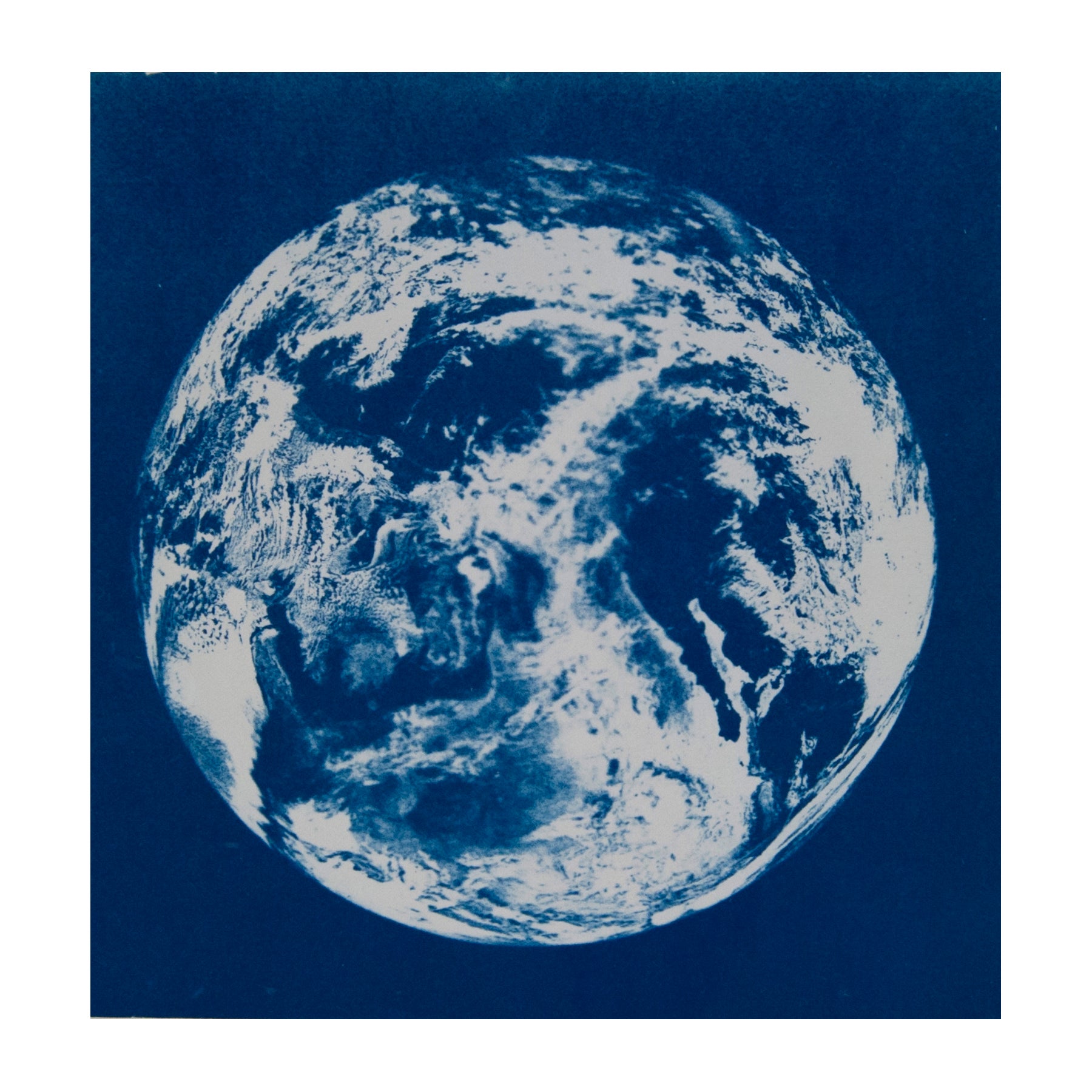
This is a cyanotype print of the Earth made from a number of photographs of our planet taken by the Suomi NPP satellite. The colour photographic montage was converted to black and white by the photographer and made into a digital negative, and then developed outside by sunlight on cyanotype paper.
“Inverted Minerals”

This image shows a multicoloured Moon, thanks to digital enhancements of a photograph of the ordinary lunar surface. The enhancements show the different minerals on its surface.
“Above the Lunar South Pole”
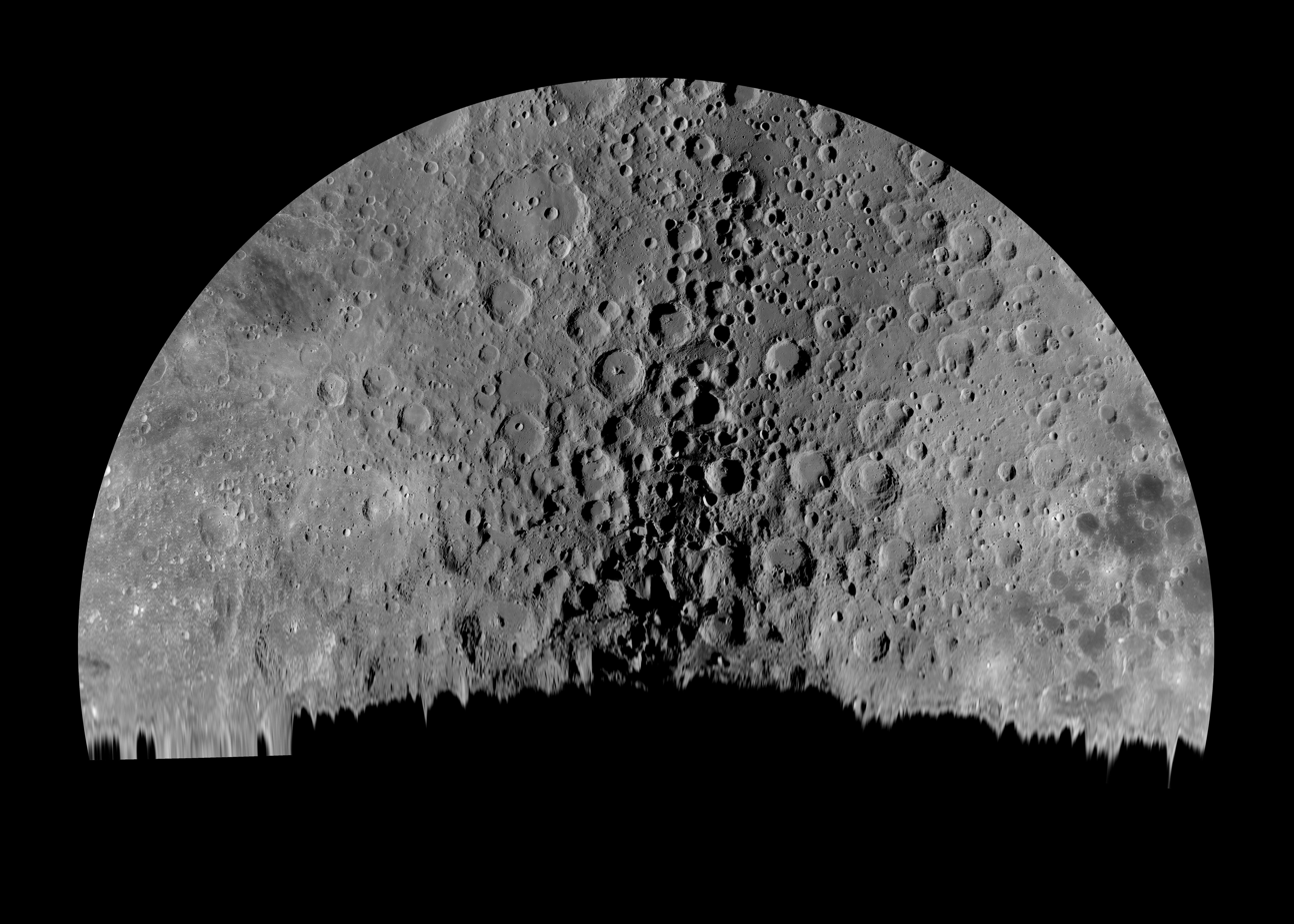
Here, a composite image shows the Moon’s south pole in great detail, despite the difficulty of imaging this side of our local satellite from the Earth. The images were taken in San Diego, California.
“Fly over the South Pole”
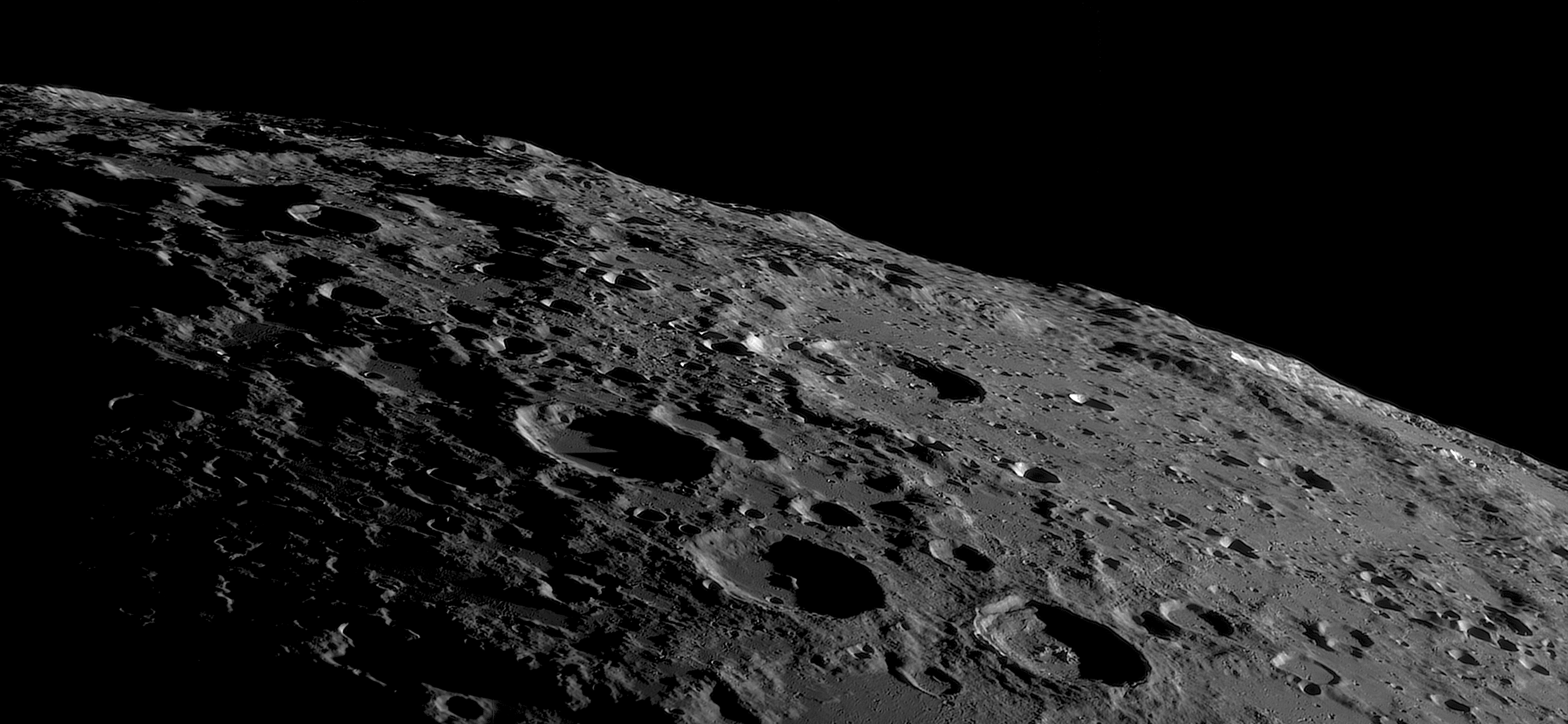
A remarkable shot captures the lunar surface in all its pockmarked glory. Taken in Lombardy Italy, the photo makes the Moon feel close enough to touch.
“Solar Inferno”
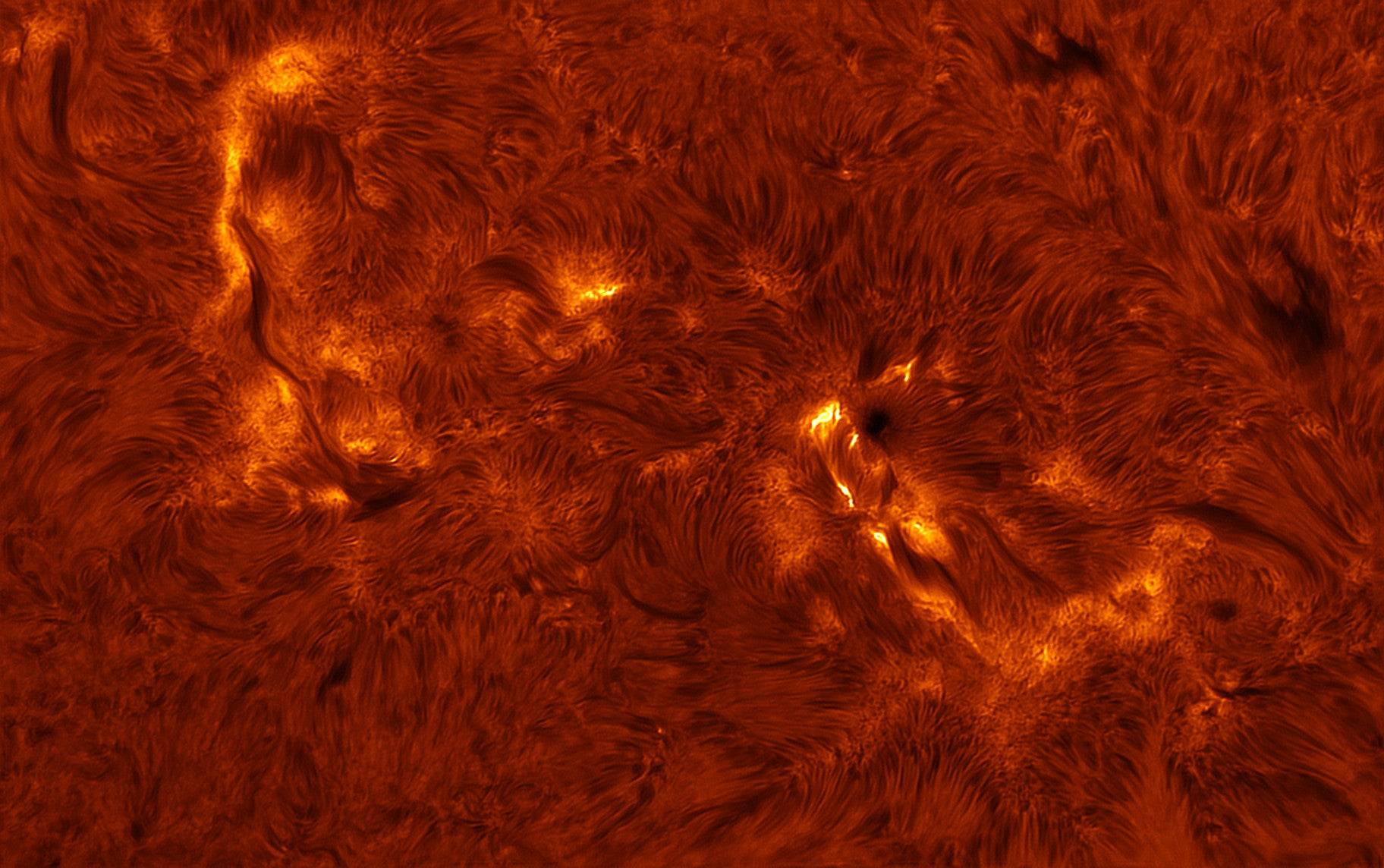
Here, a very specific swath of the Sun was imaged by filtering out all light wavelengths but a specific red band. The Sun almost looks shaggy — but for your own good, don’t touch it.
“Clouds of Hydrogen Gas”
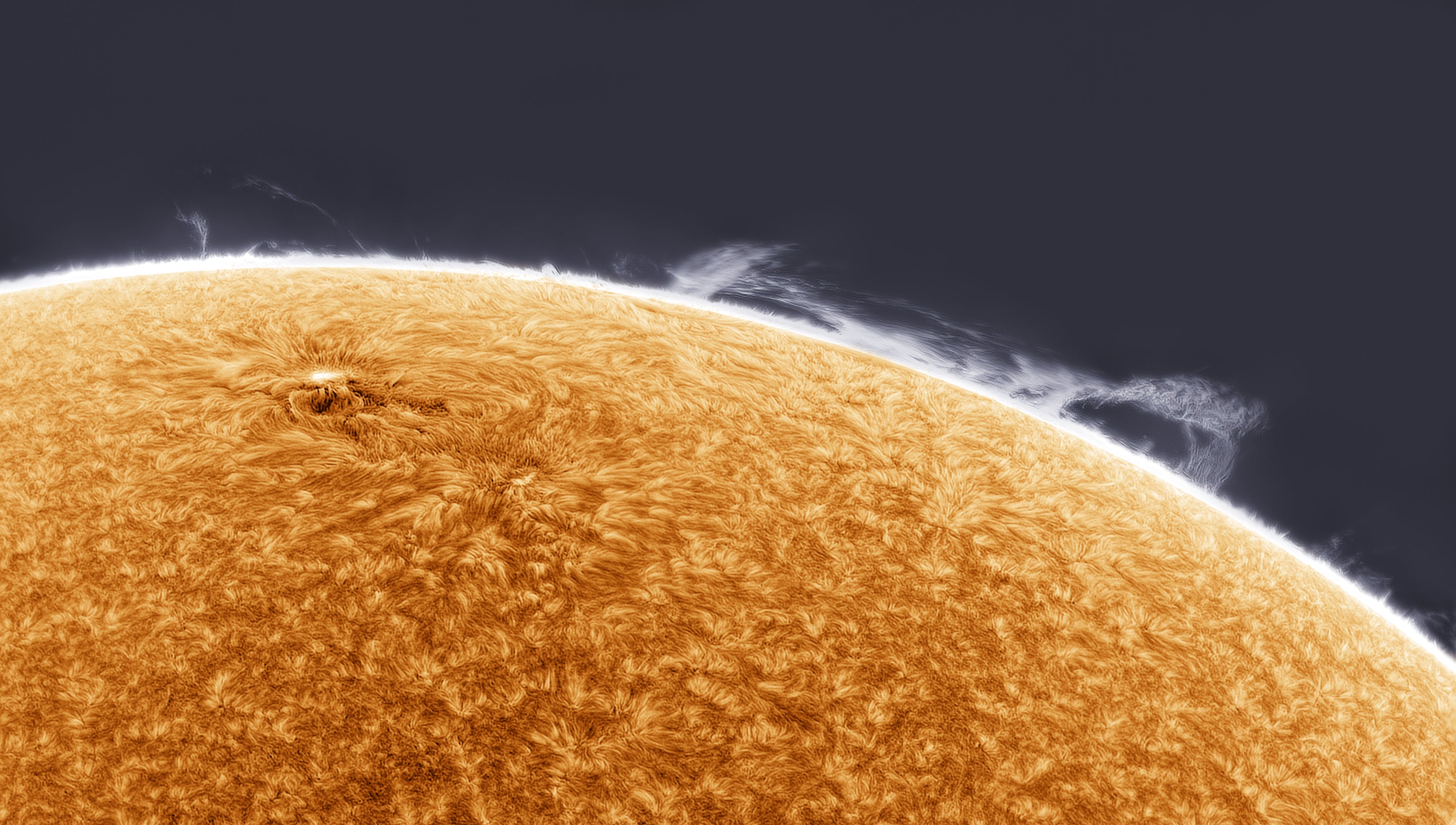
On the Sun’s surface, wispy arcs of hydrogen gas are bent and swirled by the magnetic fields on the Sun’s surface. Those fields are also responsible for the cutely named ‘campfires’ in the Sun’s corona.
“Partial Eclipse of the Sun in H-alpha”
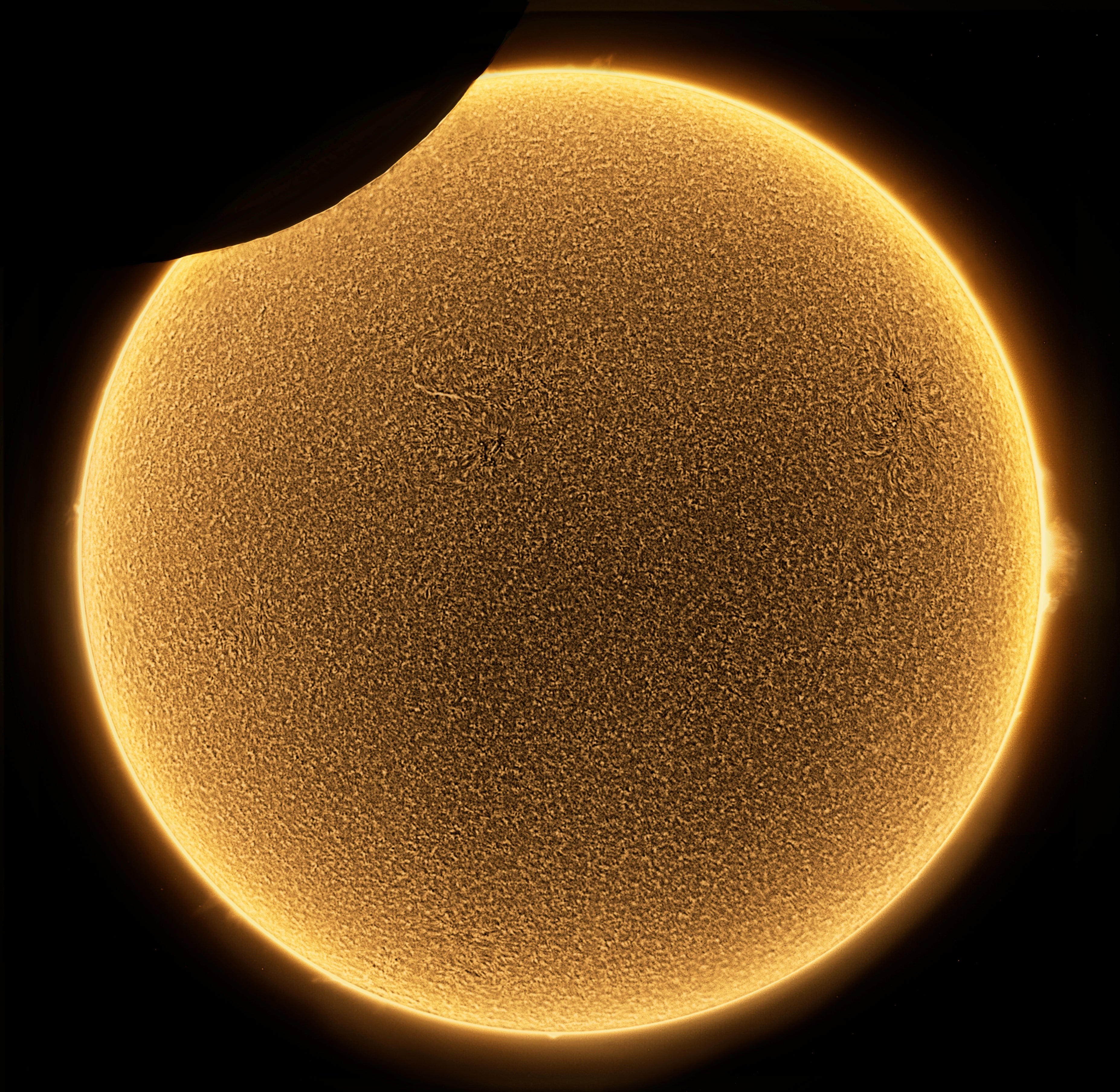
On June 10, 2021, a partial eclipse of the Sun was visible from Veneta, Italy. If you squint, you can almost make out the rugged surface of the Moon where it passes over our star.
“The Jovian Family”
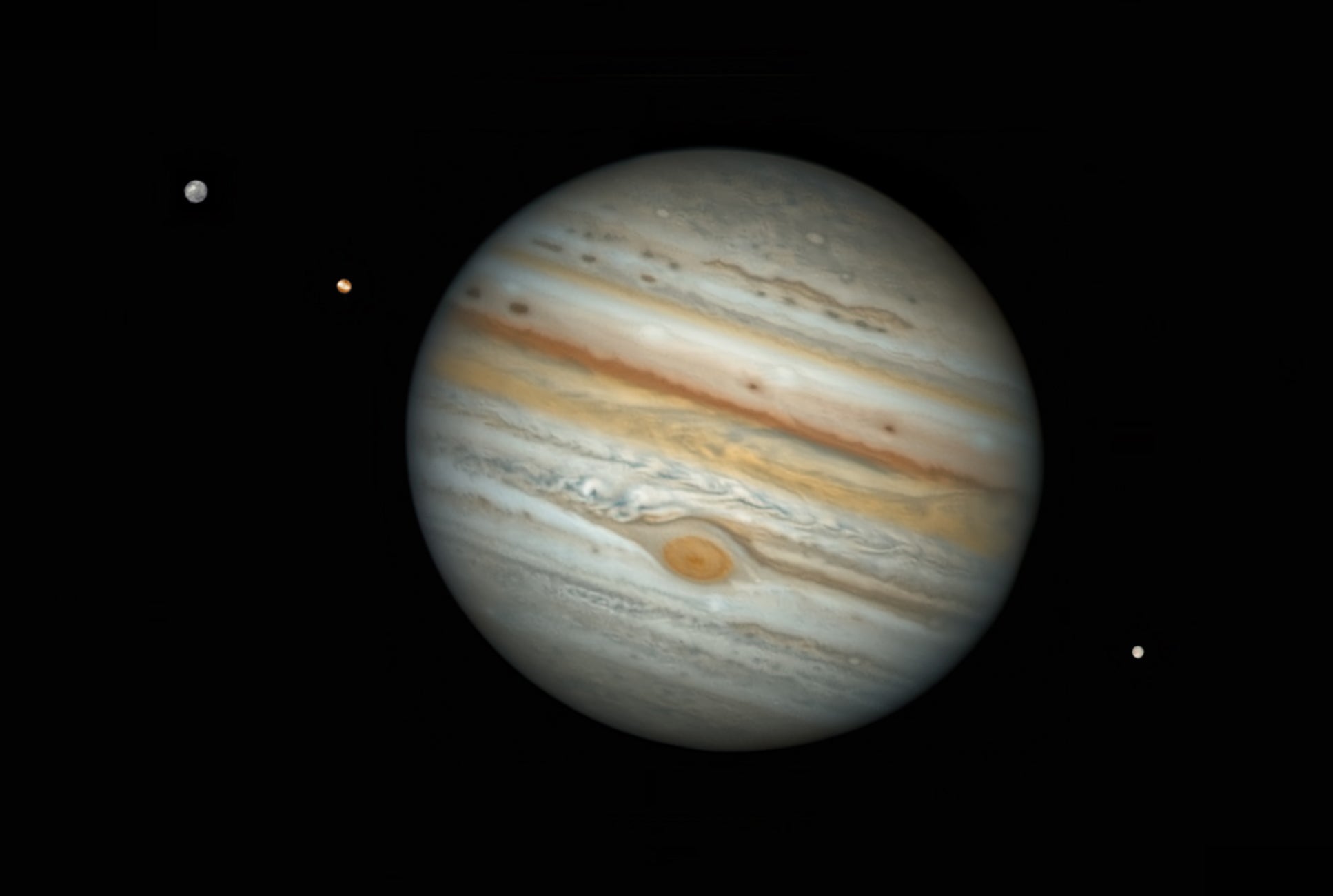
In this family photo, the gas giant Jupiter is flanked by three of its largest moons. Ganymede (far left) is the largest moon in the Solar System — though it still pales in comparison to Jupiter.
“Comet C2021 A1 (Leonard)”
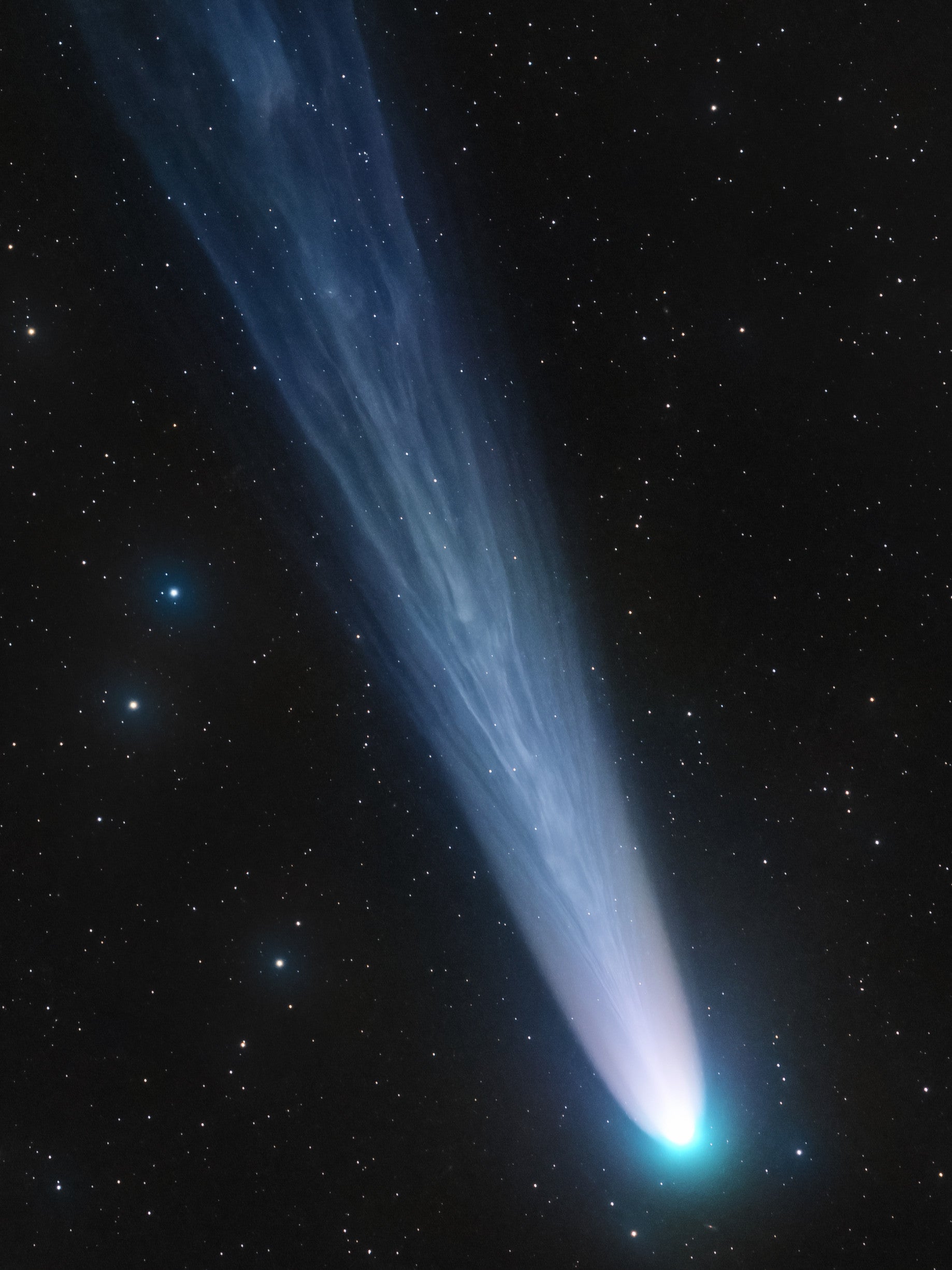
This is probably the best image we’ll ever get of Leonard, a very graceful comet. Leonard made its closest pass of Earth on December 12, 2021, and is imaged here on December 27 from Namibia. Its icy trail is a sight to behold.
“Saturn and Its Moons”
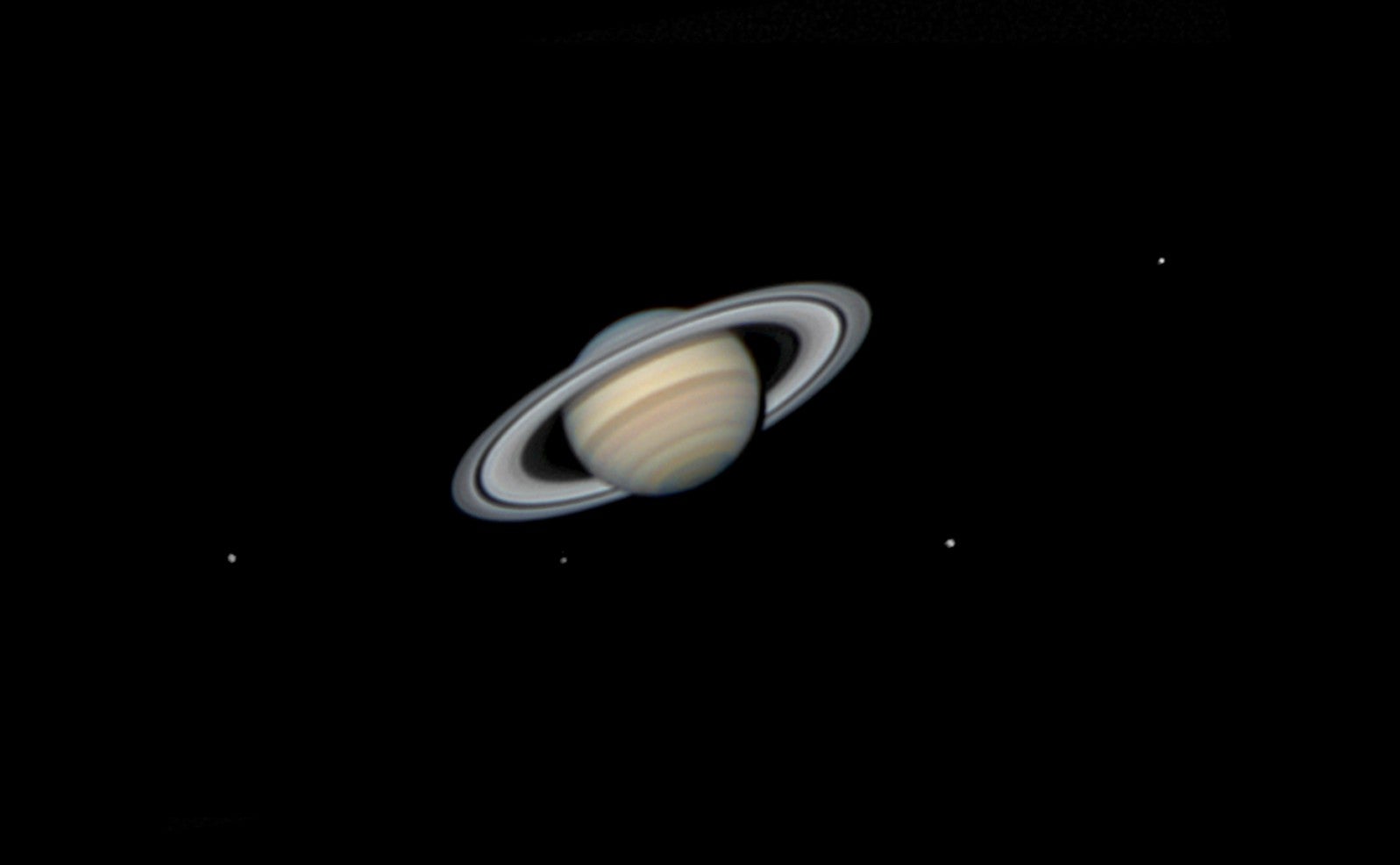
You’d be excused for thinking those splotches next to Saturn are smudges on your screen. They’re actually some of the planet’s moons seen from Brazil. Some of Saturn’s moons rank among the smallest in the Solar System.
“Moonrise Over Los Angeles”

This image shows a huge piece of cheese — sorry, the Moon — over the Sierra Nevada mountains behind Los Angeles, California. The colours of the city skyline and the mountains behind it are stunning.
“The Starry Sky Over the World’s Highest National Highway”
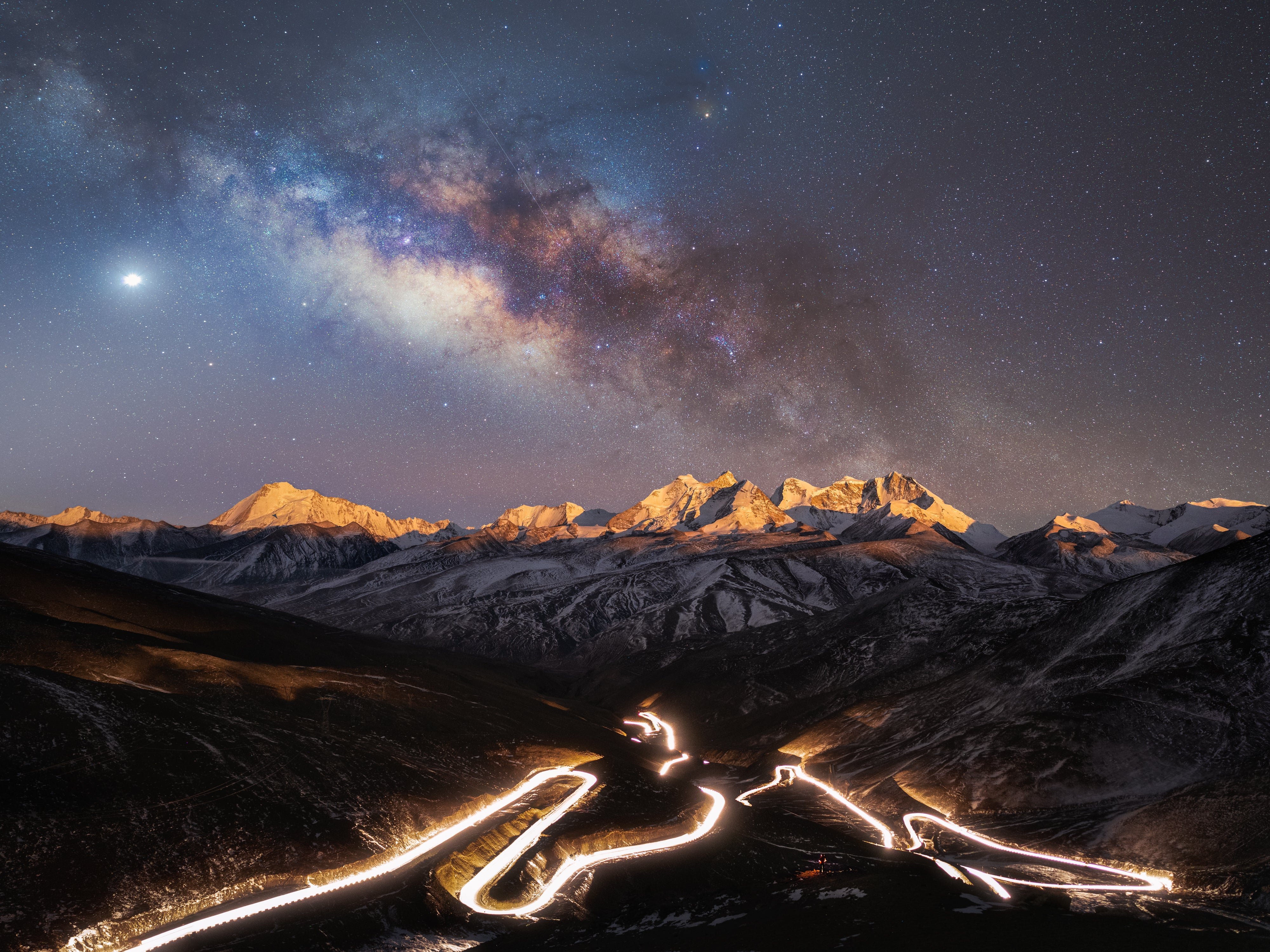
A very specific superlative, but a cool sight nonetheless. The light coming from the bending National Highway 219 in Tibet contrasts nicely with the jaggedness of the mountain Kula Kangri in the background, as well as the familiar sprawl of the Milky Way.
“Stacks and Stones”
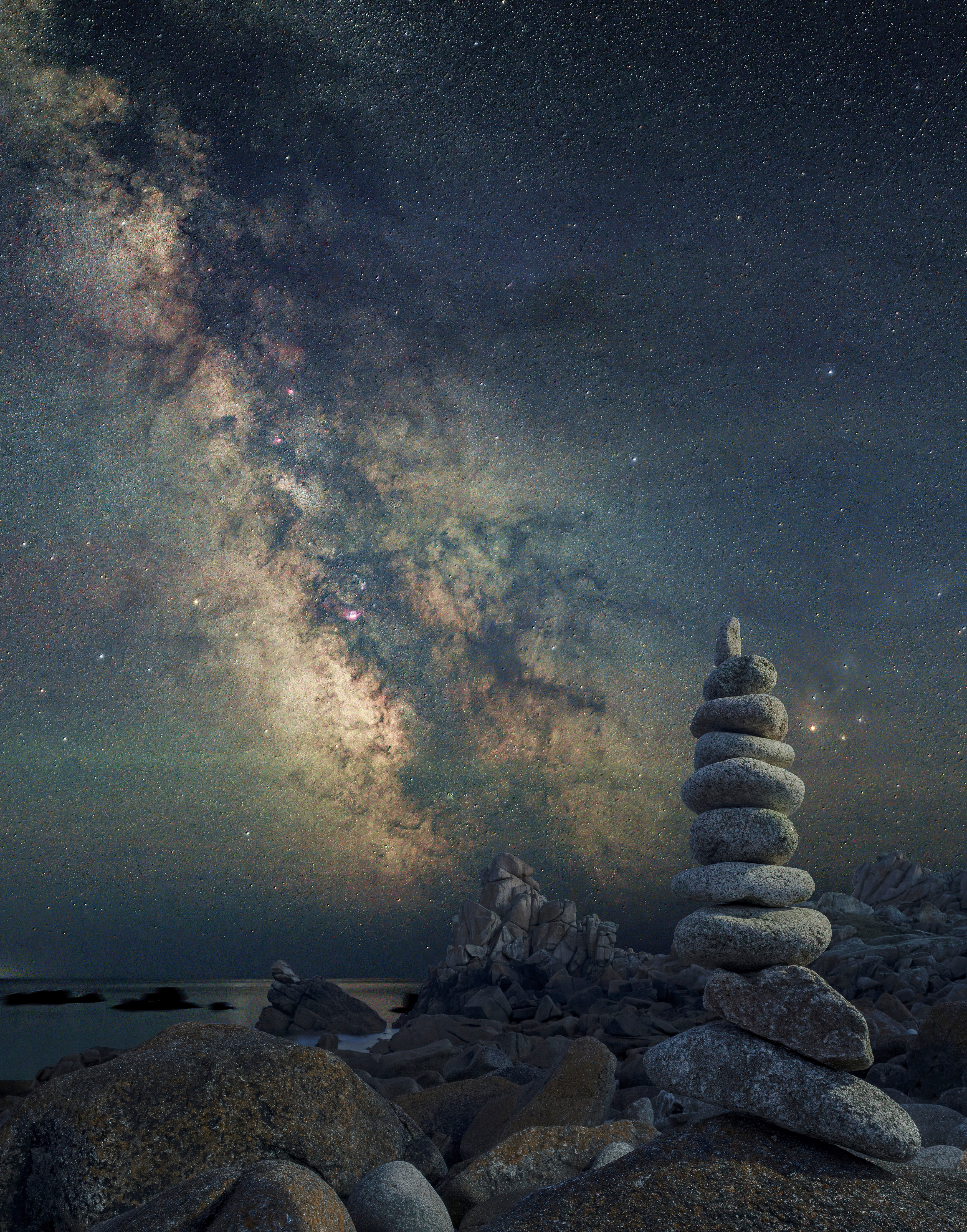
The Milky Way is also clearly seen here, with stacked stones on the Isle of Scilly in the UK in the foreground. Stacked stones have long been used as navigational tools; of course, if that doesn’t work for you, you can always use the stars.
“Equinox Moon and Glastonbury Tor”

The silhouettes of people appreciating the massive harvest moon could easily be missed in favour of the towering Glastonbury Tor. The photo might be the eeriest of the lot.
“Circles and Curves”
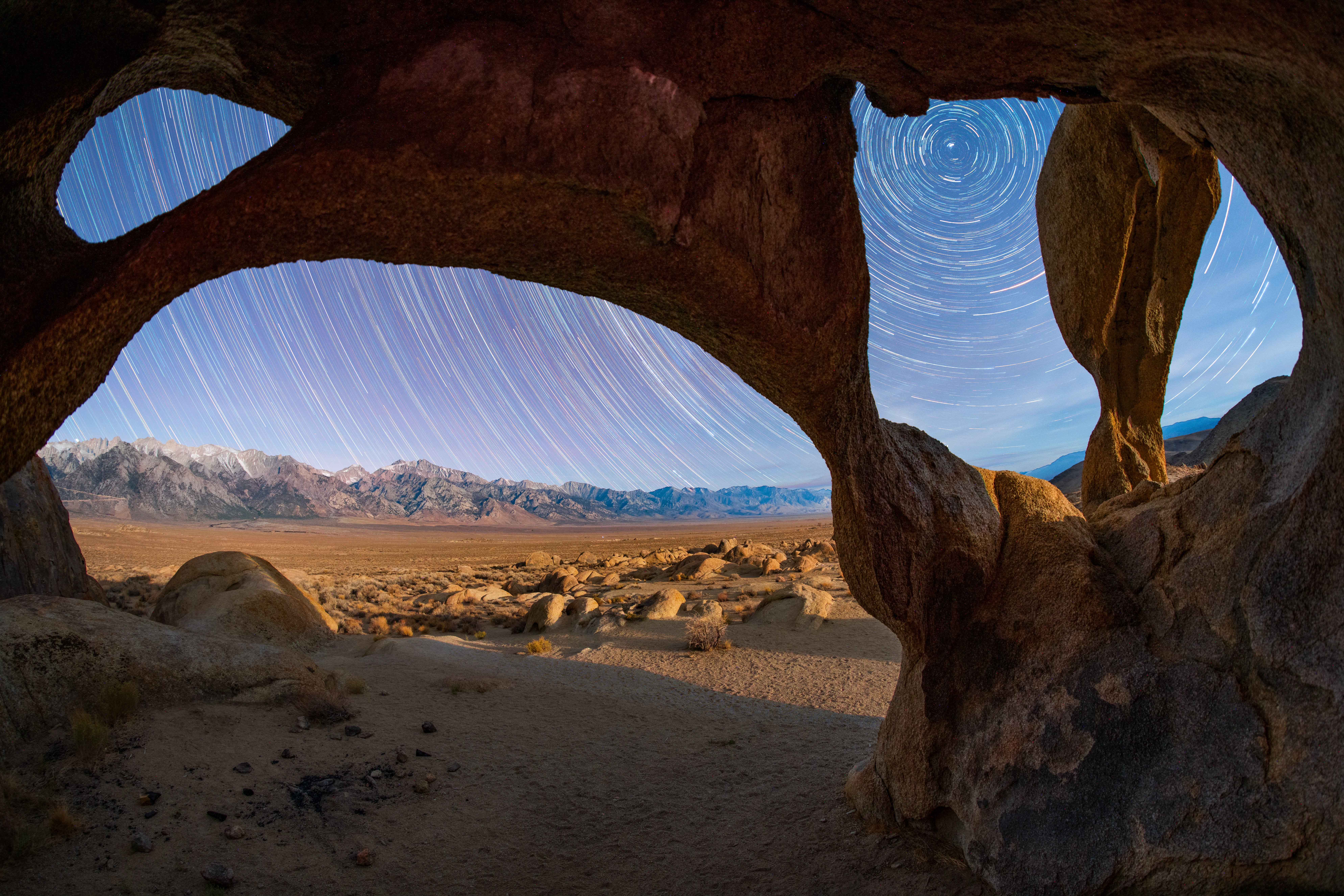
For the geometricians among us, this artful shot captures stars circling around Polaris from within a quadruple arch structure in California. The Sierra Nevada mountains can be seen in the background.
“Crossing the Madison”

So many arches! The Three Dollar Bridge in Montana makes up the foreground of this shot, with the much more massive arc of the Milky Way above it.
“Oregon Coast”
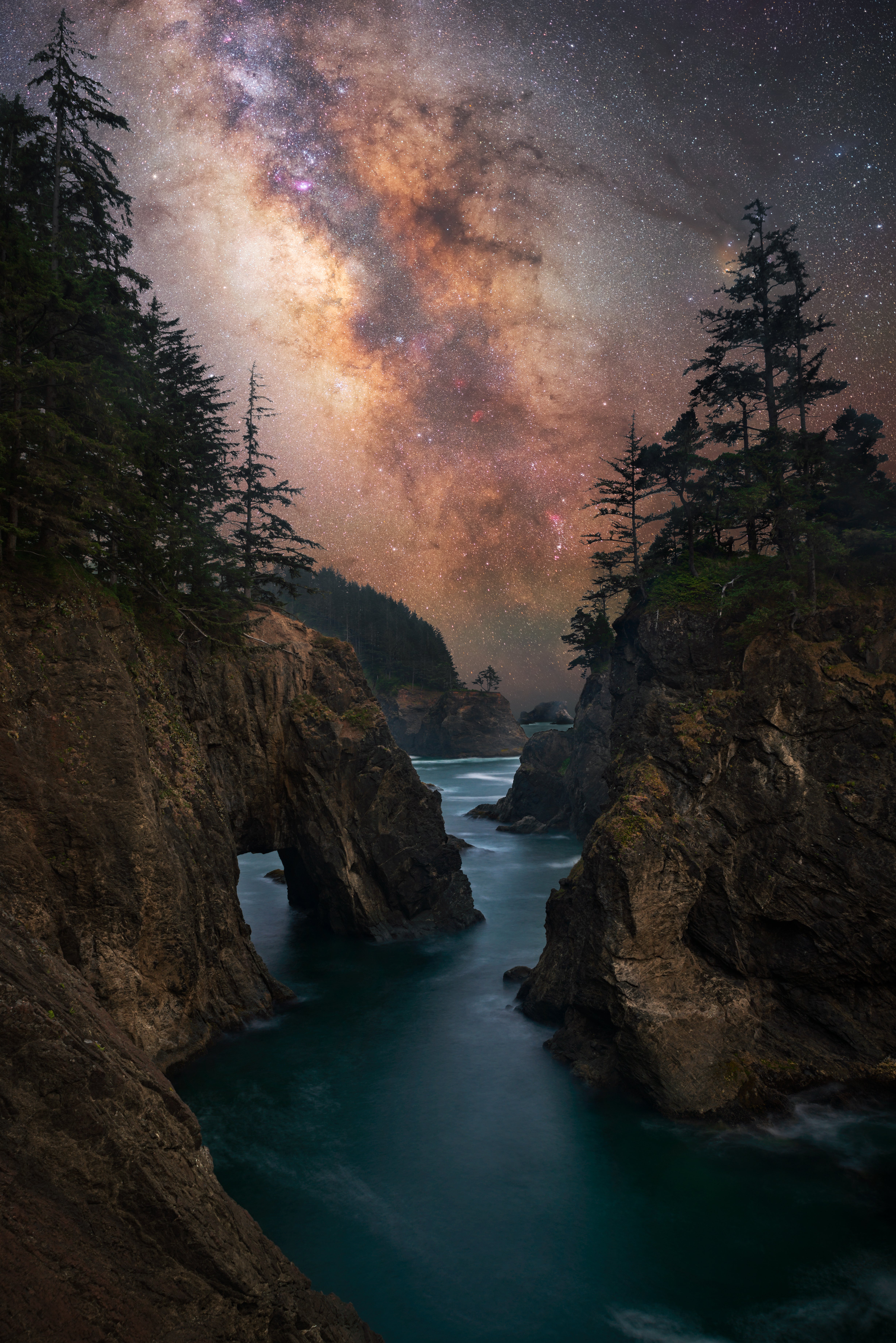
The photographer caught a rare break from the fog of the southern coast of Oregon to catch the Milky Way above the Pacific Ocean. The galaxy nicely contrasts with the blue of the water.
“Ladder to the Stars”
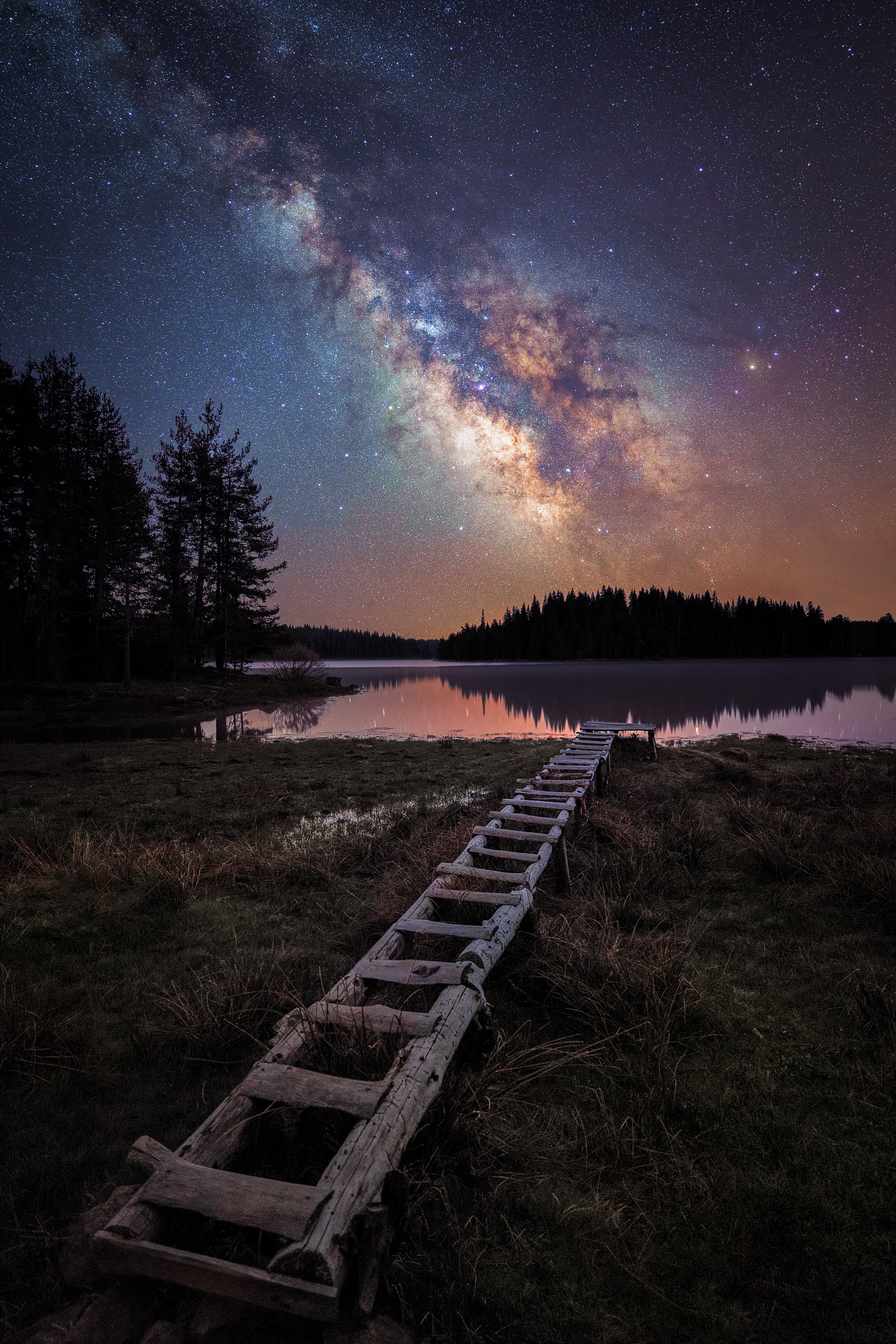
15 single exposures make up this shot taken on a Bulgarian lake. The cosmos vividly reflects off the lake water — the whole vibe makes me want to go camping.
“Chidiya Tapu”
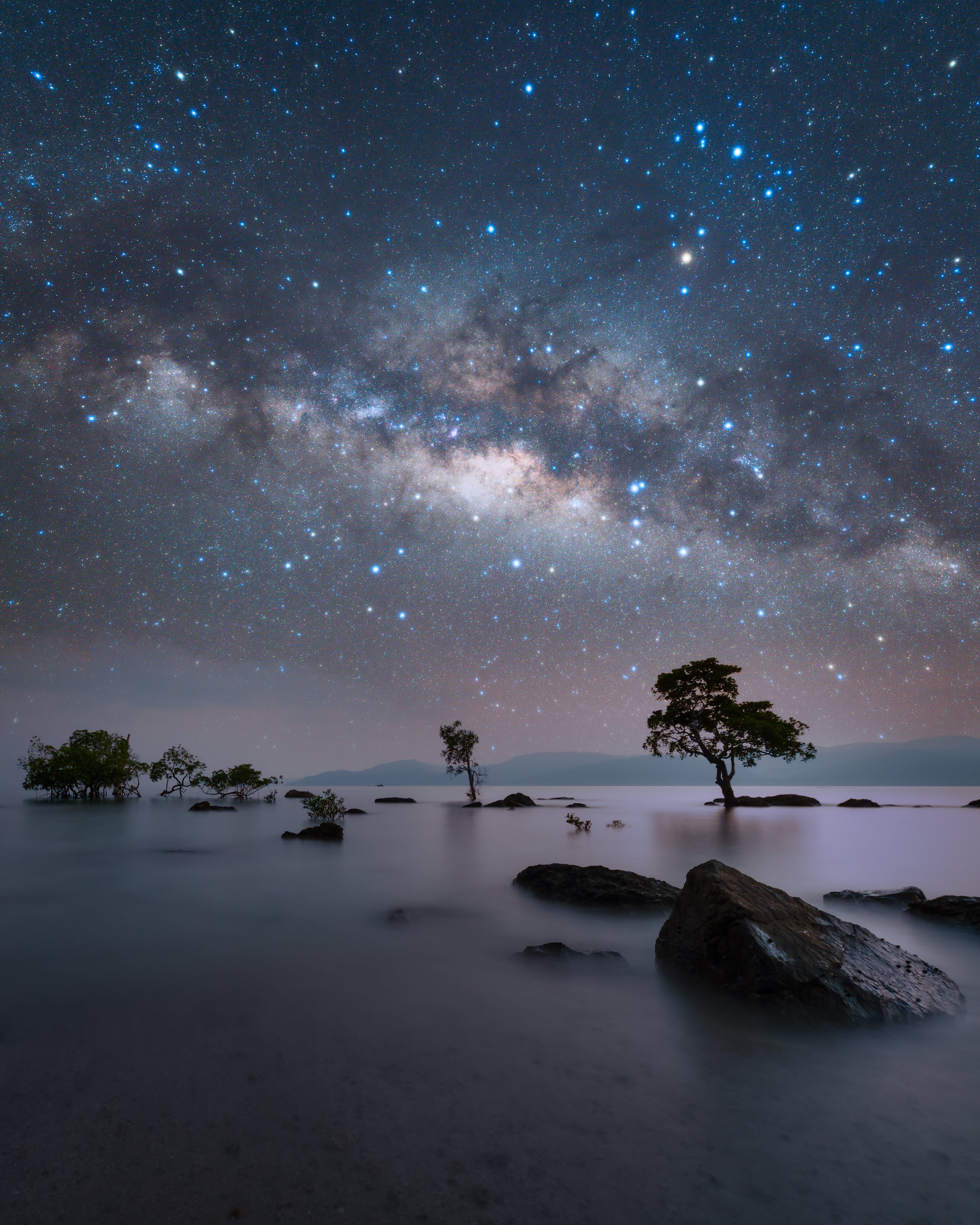
This spellbinding image shows a nature reserve off of India, in the Andaman Islands. The long exposure makes the water appear completely still and soft, while the Milky Way glows with bluish light sources.
“Diagonal”
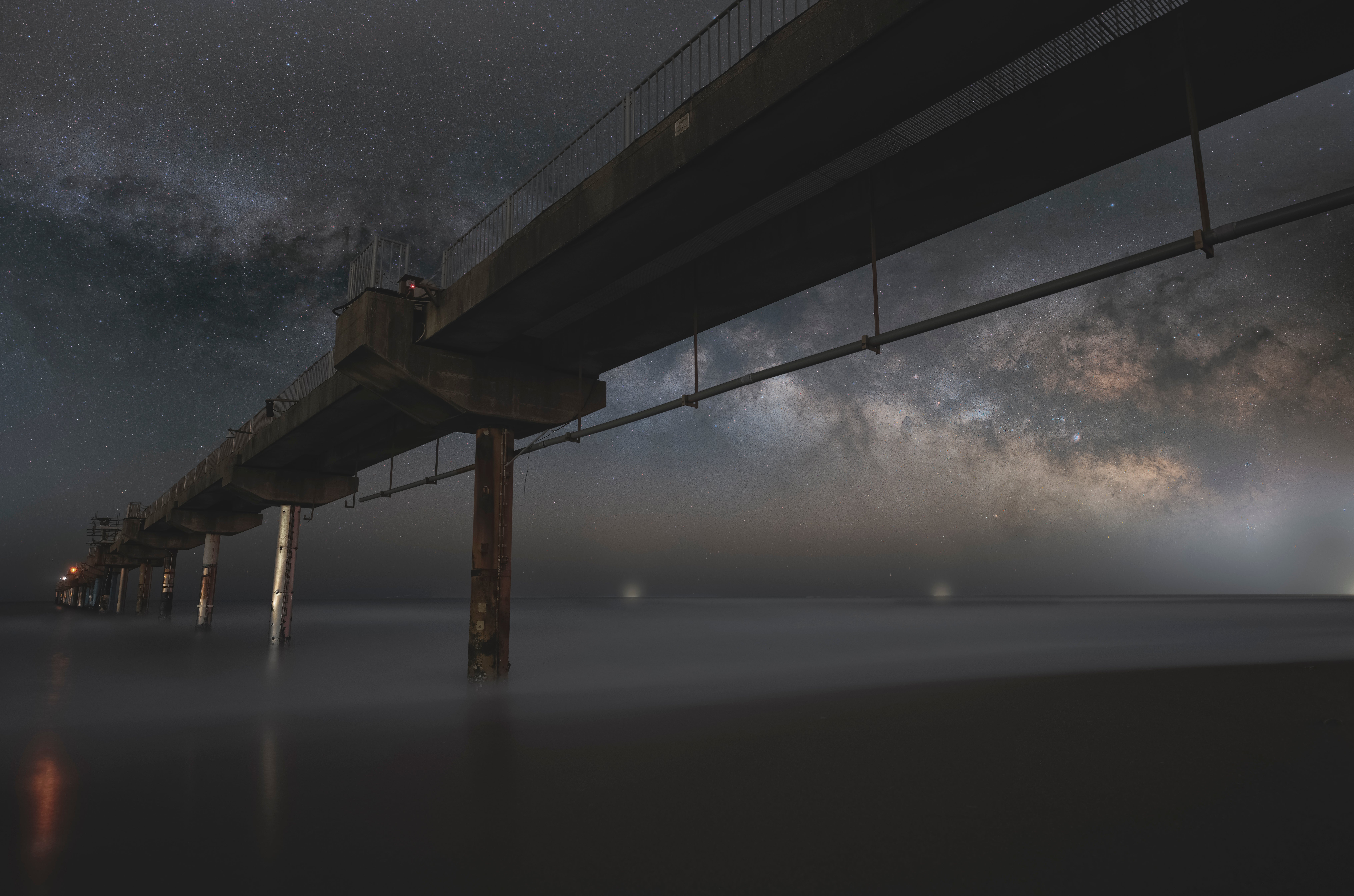
A research pier of the Marine Research Institute in Japan stretches off into the distance, in this gloomy shot taken across the water. The Milky Way appears to intersect with the pier at an acute angle.
“Suburbs of Carina Nebula”
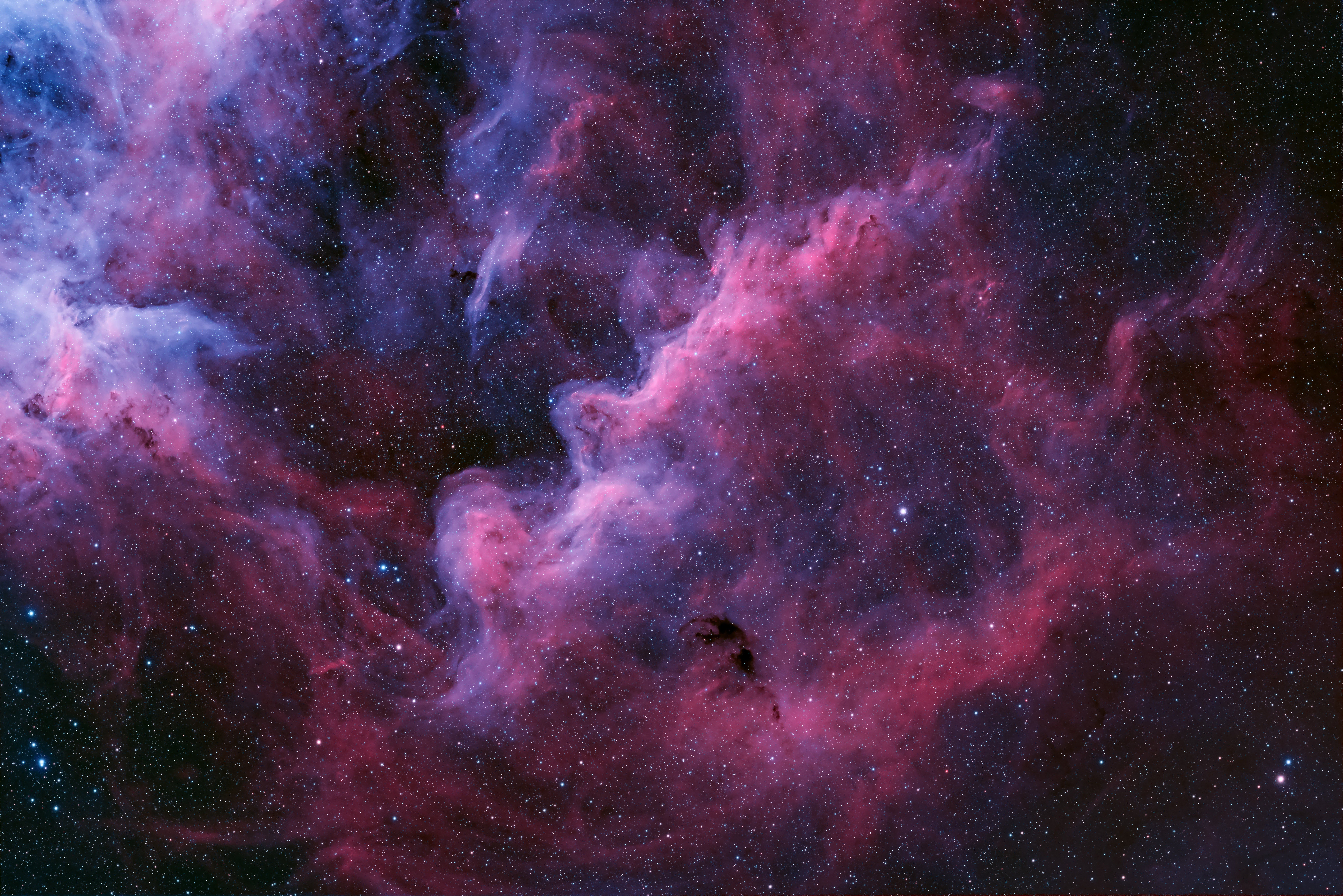
One can’t come closer to space cotton candy than this image of the outer reaches of the Carina Nebula some 8,500 light-years from Earth. You’re looking at light that started heading toward Earth during the last Ice Age — and it doesn’t look a day over 4,000!
“NGC6888 the Crescent Nebula”
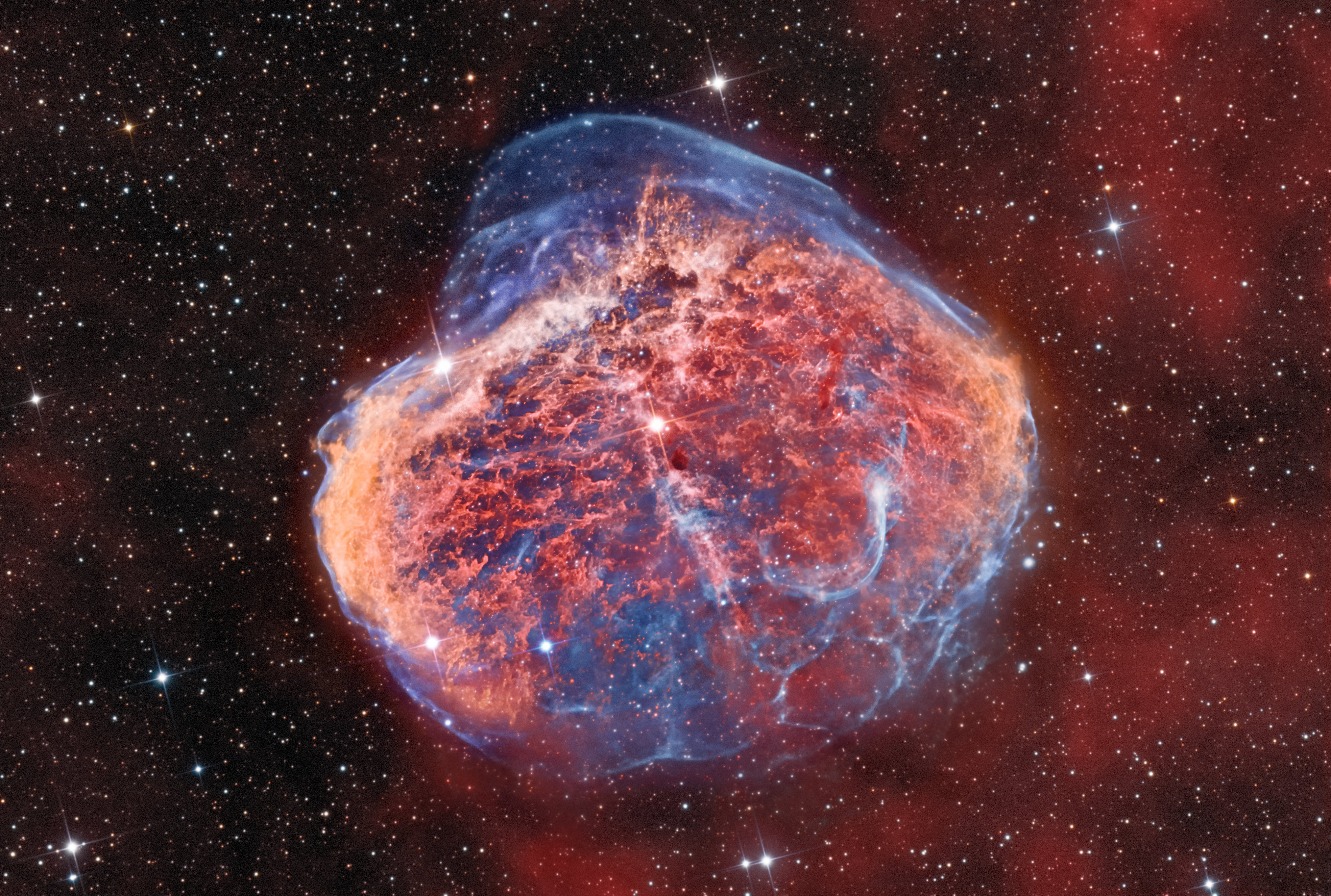
If you squint, the Crescent Nebula looks a lot like a brain. It’s actually 25 light-years across, and ejects the equivalent of the Sun’s mass every 10,000 years, according to NASA.
“The Rolling Waves of Vela”
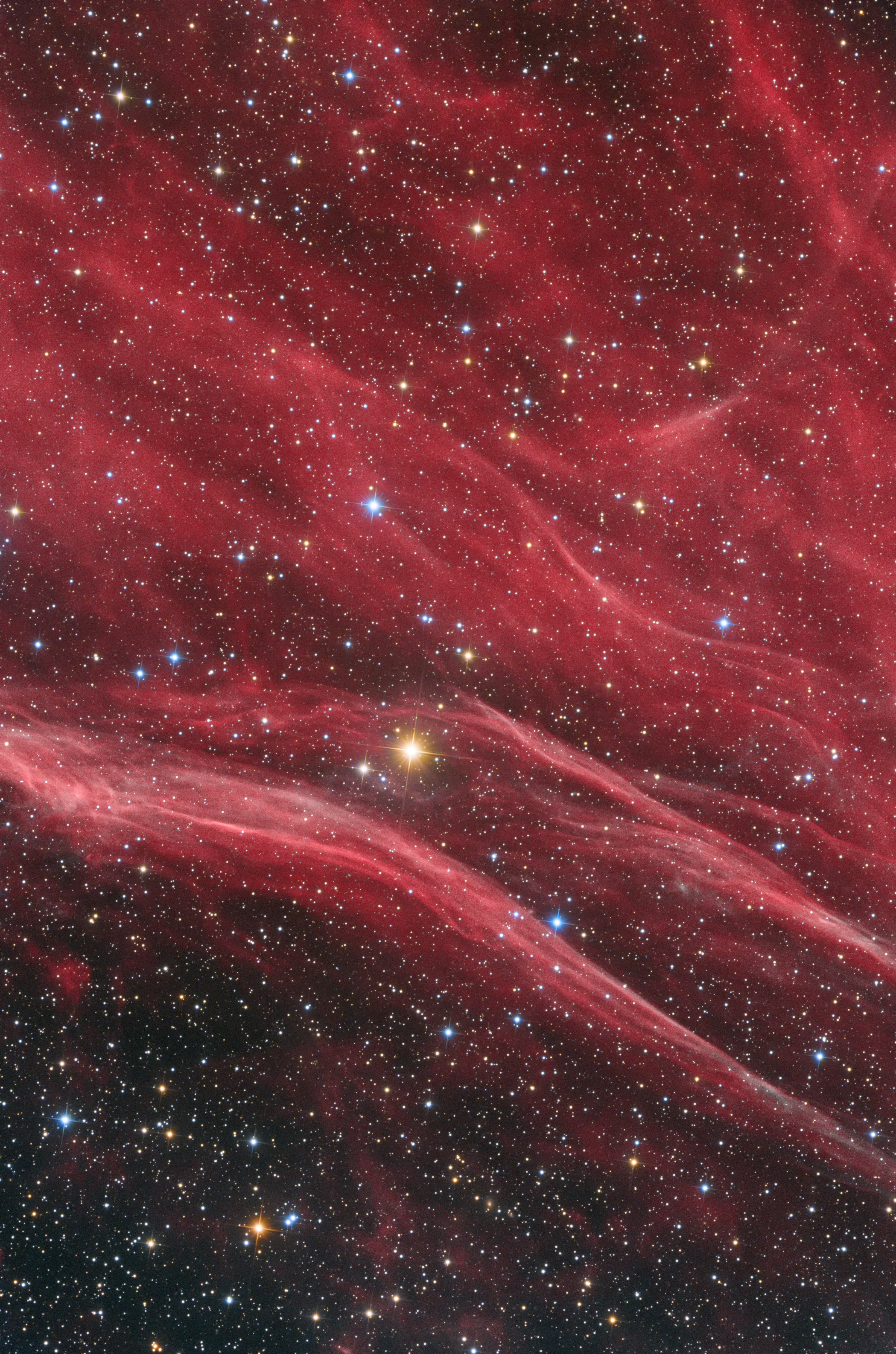
The wispy reds in this image were captured from Forbes, Australia. It shows the edge of the constellation Vela, with more distant stars shining through the remnant of a supernova.
“A Little Devil Riding on the Head of a Dragon”

The nebula IC 1848 looks a bit like beautiful, massive algae growing across a pool of water. It’s actually the Soul Nebula, partner to the nearby Heart Nebula.
“Pickering’s Triangle in Light Polluted City”
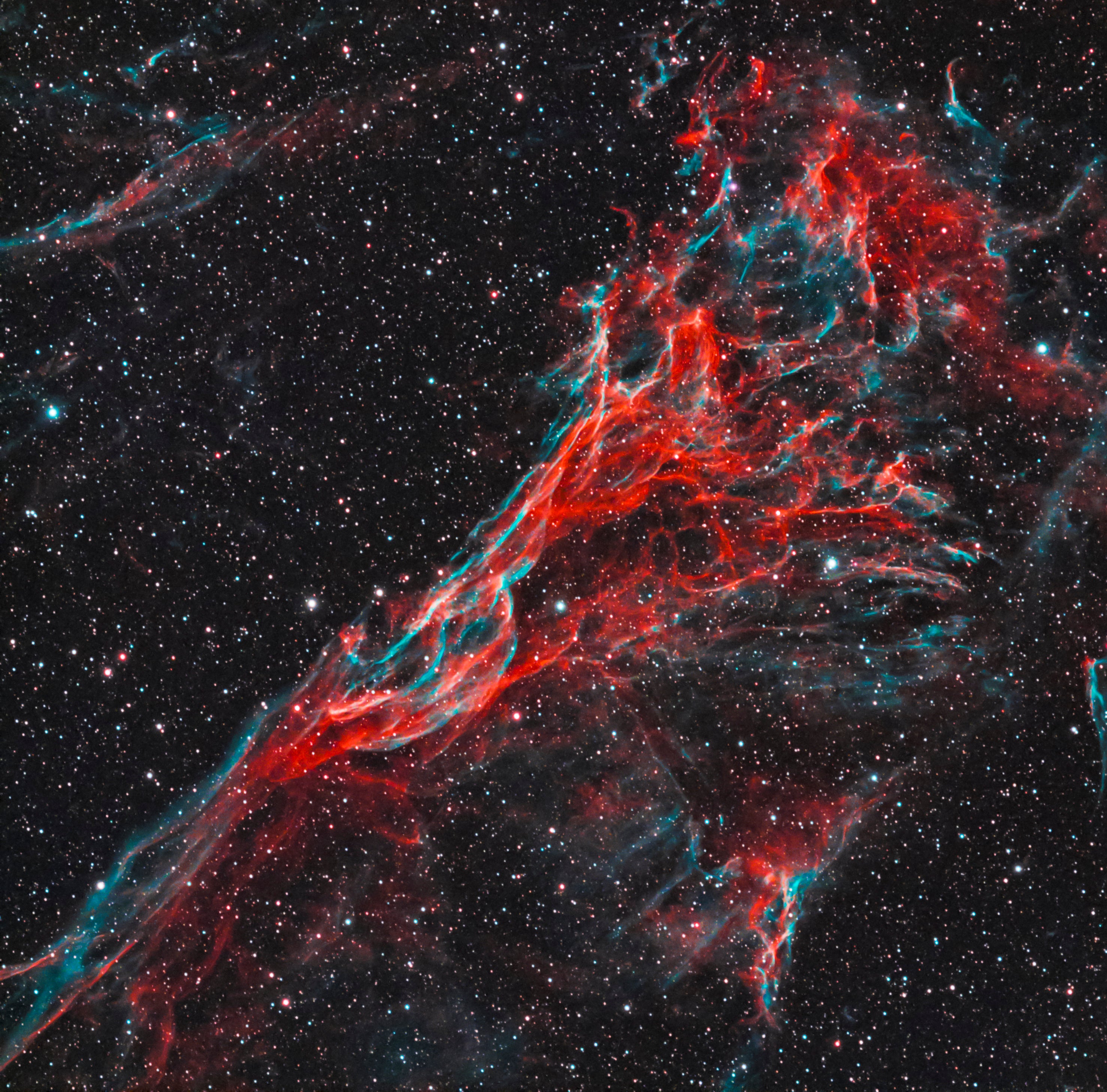
Though this looks like the hellish teaser for the fifth season of Stranger Things, it’s actually Pickering’s Triangle, a supernova remnant captured in a six-hour exposure taken from Shaoxing, China. The exposure had to be long to see the sky despite local light pollution.
“Interacting Galaxies in Eridanus”

These two galaxies are so close to each other that the larger galaxy’s spiral arm is being distorted towards the smaller structure. They are in the constellation of Eridanus.
